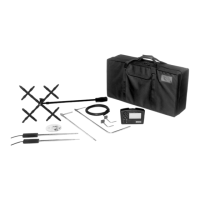What does Error Code 31 mean on a TSI Instruments Power Tool device?
- JJudy WilliamsSep 2, 2025
If your TSI Instruments Power Tool displays Error Code 31, it means the pressure calibration voltage at 5 in. H2O must be less than the pressure calibration voltage at 15 in. H2O. Make sure calibration pressures are correct.


